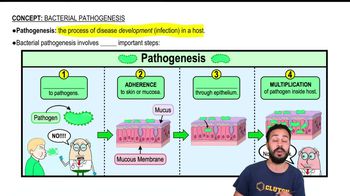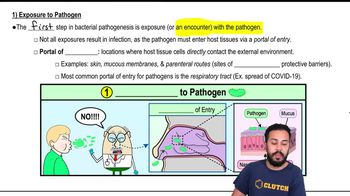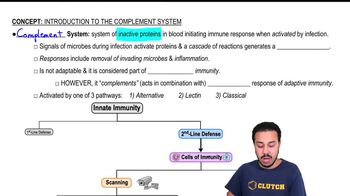All of the following are related to bacterial infection. Which would prevent all of the others?
a. vaccination against fimbriae
b. phagocytosis
c. inhibition of phagocytic digestion
d. destruction of adhesins
e. alteration of cytoskeleton
 Verified step by step guidance
Verified step by step guidance



All of the following are related to bacterial infection. Which would prevent all of the others?
a. vaccination against fimbriae
b. phagocytosis
c. inhibition of phagocytic digestion
d. destruction of adhesins
e. alteration of cytoskeleton
Use the following choices to answer questions 9 and 10:
a. Cryptococcus
b. Haemophilus
c. Listeria
d. Naegleria
e. Neisseria
Microscopic examination of cerebrospinal fluid from a person who washes windows on a building in a large city reveals ovoid cells.
Use the following choices to answer questions 9 and 10:
a. Cryptococcus
b. Haemophilus
c. Listeria
d. Naegleria
e. Neisseria
Microscopic examination of cerebrospinal fluid reveals gram-positive rods.
Complete the following table. <IMAGE>
Under what conditions can the saprophytes Aspergillus and Rhizopus cause infections?
Complete the following table:
<IMAGE>